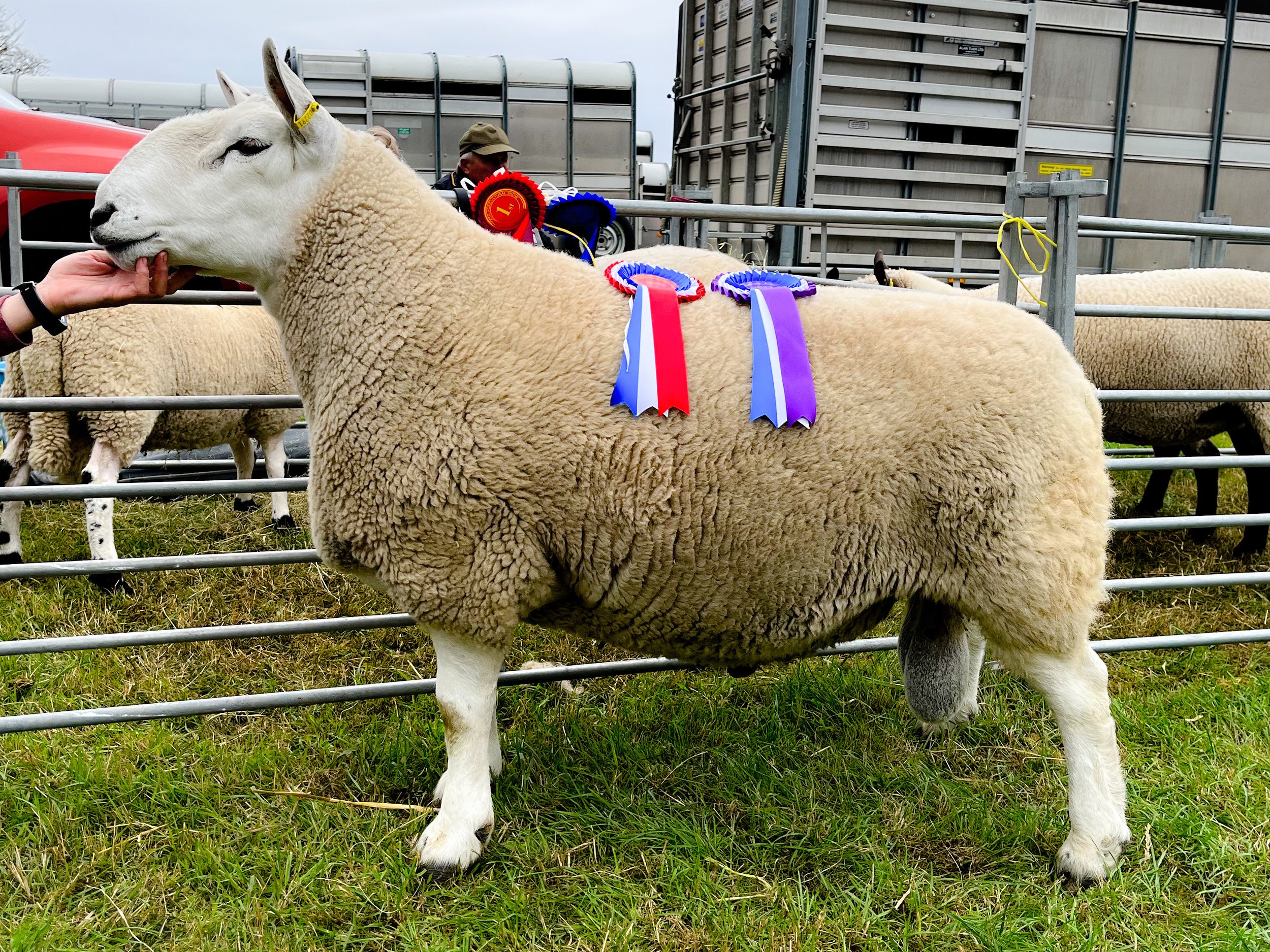
Shetland Sheep
Shetlands are small, fine-boned sheep that have adapted over a thousand years to the tough conditions on the Shetland Isles. The Shetland breed is a popular choice for a whole range of people due to its attractive appearance, ease of handling, wide range of colours and markings and profitable use in a commercial setting.
Teeswater
The Teeswater is our lustre longwool breed of choice. The Teeswater breed is native to the Teesdale area of County Durham. The principal use for the Teeswater is in the production of a crossbred ewe, the Masham. The wool of the Teeswater, with a staple length of 20 - 30cm and weight of 3 - 6kg, is highly sought after by hand spinners
Clun Forest
The Clun Forest sheep originate from the area surrounding the Clun Forest in Shropshire. Similar to many of the British breeds of upland sheep, Clun Forest are hardy, adaptable, good foragers, and are long–lived. The Clun fleece is a short, close-textured wool of consistently high quality that is popular with spinners, knitters and weavers.
Kerry Hill
The breed originates from the hills around the small town of Kerry, on the English/Welsh borders. This striking breed has developed substantially in its long history and is now a sheep of bold, strong type, with ewes proving themselves as excellent mothers. The wool is a white, dense quality fleece, free from kemp.
If you are looking for Kerry Hill sheep these have moved with Rach to Buttermere and you can find them/contact her here
Jacob
The Jacob Sheep breed is steeped in history with origins in the Middle East and is quite possibly the oldest sheep breed in the World, with historical references dating back to the Old Testament, Book of Genesis.
The breed has evolved considerably since these early origins and today has become well established in the United Kingdom and indeed in many other parts of the world.
We have always used Jacob sheep commercially on the farm and 2020 marked the start of the pedigree flock with the purchase of a pedigree ram.
Coloured Ryeland
The Coloured Ryeland is one of the oldest English sheep breeds going back seven centuries when the monks of Leominster in Herefordshire bred sheep and grazed them on the rye pastures, giving them their name.
They are small sheep, docile and easy to handle. Their coloured fleece is popular with hand spinners and craft workers and comes in a range of colours from pale cream / grey to dark chocolate brown.
Kev’s flock began as a Christmas present in 2020.
Torwen (Welsh Badger Face)
The Badger Face Welsh Mountain is a sheep with a long history. The breed comes in two distinct colours; Torddu and Torwen. Torddu (pronounced Torthee) means black belly and is mainly white with a distinctive black underbelly and eye stripes, while the Torwen (white belly) shows the reverse colouring with smaller eye stripes. The Torddu is about three times more numerous than the Torwen and is known as the Badger Face.
Norfolk Horn
The Norfolk Horn is one of the oldest breeds of sheep in Britain. It is believed to be descended from the ancient Saxon black faced sheep once prevalent in Northern Europe. Although named after the county of Norfolk the breed developed in the relative isolation of East Anglia and was the prevalent breed in Norfolk, Suffolk, north Essex and south east Cambridgeshire.
Herdwick
Herdwick sheep are the native breed of the central and western Lake District and live on the highest of England’s mountains. They are extremely hardy and are managed in the traditional way on the Lake District fells that have been their home for generations.
We run a couple of ewes pure and the rest are used commercially.
Cheviot
The Cheviot originated in the Cheviot Hills, on the border of England and Scotland. Recognised as a hardy sheep as early as 1372, Cheviots did well in those bleak, windswept conditions, with their strong constitution, easy lambing, and a well-developed mothering instinct.
We use our show winning Cheviot ram, Cuthbert, over our commercial Shetland ewes to produce a traditional cross for commercial breeding. Cheviot x shetland are handy sized ewes around 55kg, perfect for our flood plain farm, hardy ewes able to comfortably rear twins when mated to continental rams.
Sadly we lost Cuthbert in Spring 2024, but there is a new kid on the block, shearling cheviot ram Cameron.










